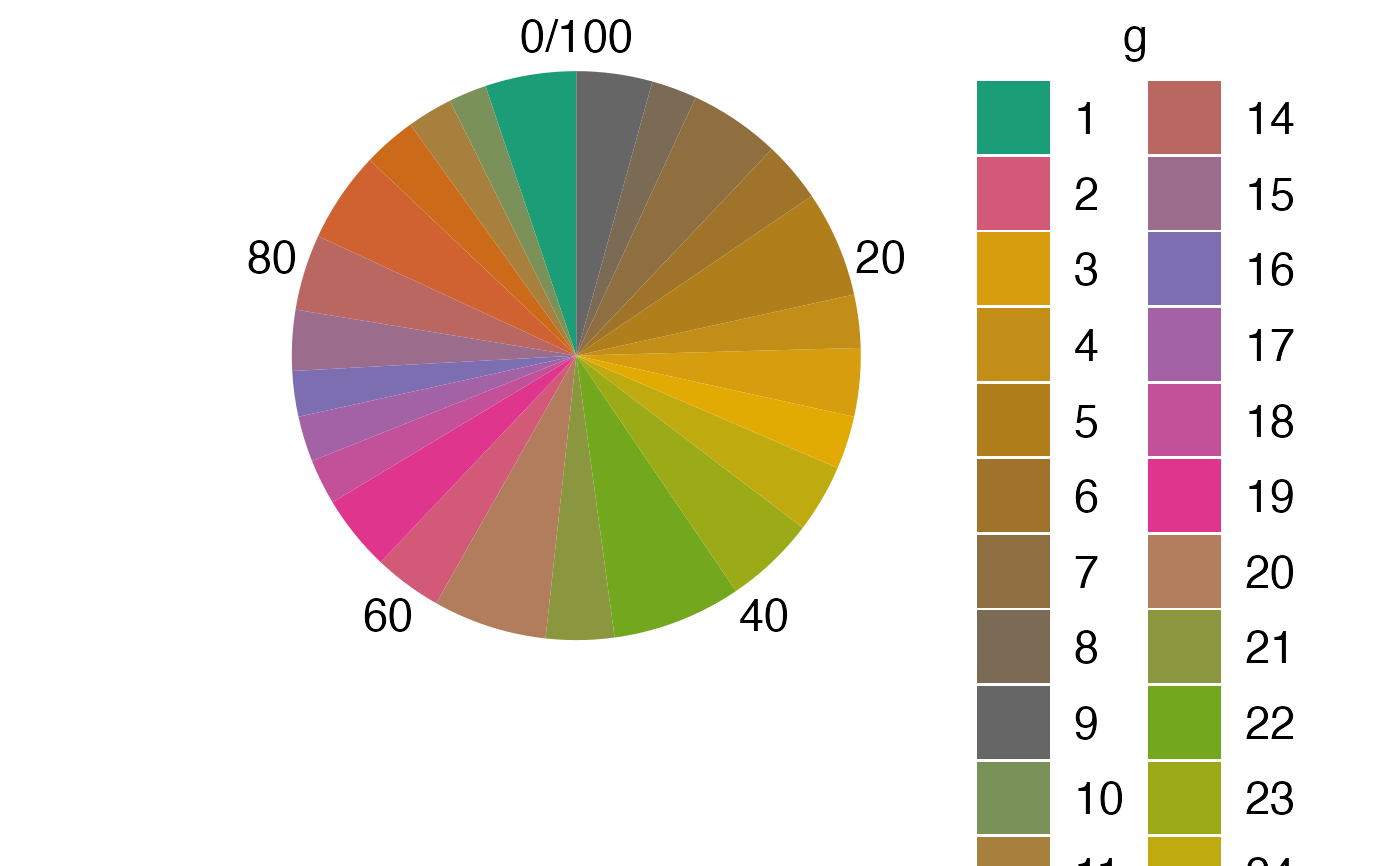Make a Pie Chart
plotPieChart.RdMake a Pie Chart
plotPieChart( value, group, legendName = deparse(substitute(group)), legendLabels = if (is.factor(group)) levels(group) else unique(group), legendColors = NULL, showAxisText = TRUE, showAxisTicks = showAxisText, asPercentages = TRUE, palette = getGraphOption("palette"), ... )
Arguments
| value | The value for each group. |
|---|---|
| group | Character of factor that indicates which value belongs to which group. |
| legendName | Character, title of the legend. |
| legendLabels | Character vector with names for the legend. |
| legendColors | Character vector with colors. |
| showAxisText | Logical, should the axis text be shown? |
| showAxisTicks | Logical, should the ticks on the polar coordinates be shown? |
| asPercentages | Logical, should value be transformed to percentages? Recommended to be true. |
| palette | Character vector with palette name. If this option is set then legendColors is ignored. If palette is NULL then legendColors are used. |
| ... | Arguments to be passed to |
Value
a ggplot object.
Examples
library(ggplot2) value <- c(25, 25, 50) gg <- letters[1:3] ga <- letters[4:6] g <- plotPieChart(value, gg) print(g)plotPieChart(value, gg, ga)
plotPieChart(value, gg, ga, showAxisTicks = FALSE)
plotPieChart(value, gg, ga, showAxisTicks = FALSE, legend.position = "none") # hide the legend
# axis can still be modified print(g + scale_y_continuous(breaks = c(50, 75, 0)))
print(g + scale_y_continuous(breaks = seq(0, 100, 10)))
cm <- c(0, cumsum(value)) breaks <- 100 - (cm[-1] + cm[-length(cm)]) / 2 print(g + scale_y_continuous(breaks = breaks, labels = gg))
# something more extreme: value <- rpois(25, 10) g <- as.character(seq_len(25)) plotPieChart(value, g)
